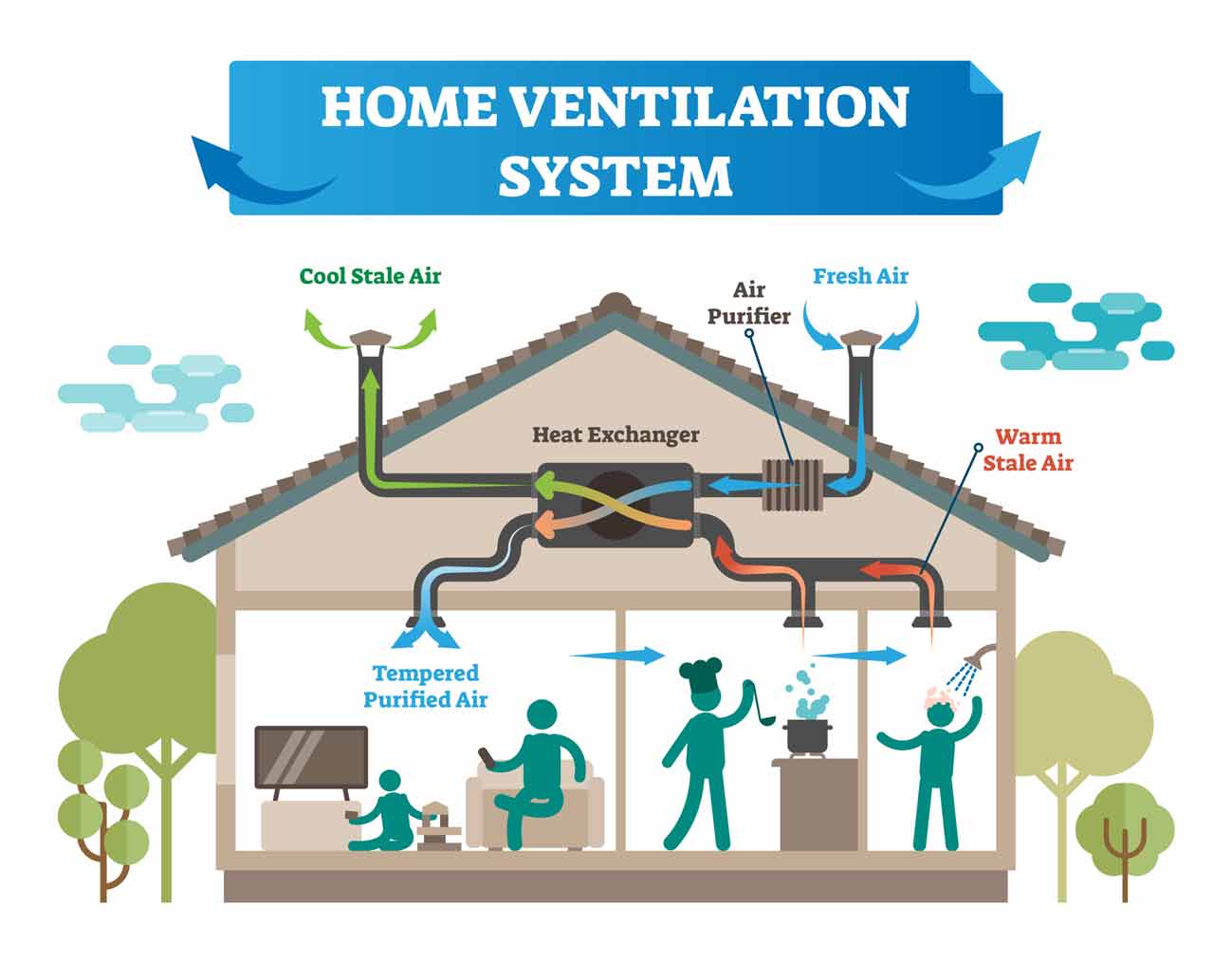Checking out the Benefits of Heat Recovery Ventilation for Energy Efficiency in Houses
Heat Recovery Ventilation (HRV) systems offer property owners a functional approach to improving energy effectiveness. By redeeming warmth from outbound air, these systems can considerably decrease cooling and heating expenses. Furthermore, they give a steady supply of fresh air, enhancing indoor air top quality and comfort levels. As home owners consider lasting alternatives, comprehending the nuances of HRV systems becomes significantly essential. What variables should one review before making such an investment?
Understanding Heat Recovery Ventilation Equipments

Exactly How HRV Enhances Indoor Air Quality

Power Financial Savings: The Economic Benefits of HRV
Making the most of energy effectiveness, heat recovery ventilation (HRV) systems provide significant monetary benefits for homeowners. By recovering and recycling warmth from exhaust air, HRVs considerably minimize cooling and heating expenses. This modern technology can bring about power financial savings of as much as 30%, relying on climate and usage patterns. House owners usually see lowered energy bills shortly after installation, making HRVs an economically wise investment gradually. Additionally, several areas supply rewards or discounts for energy-efficient upgrades, additionally boosting the financial appeal. As energy prices remain to increase, the cost-effectiveness of HRVs ends up being progressively clear. In general, the unification of HRV systems not just promotes i was reading this energy efficiency but also adds to long-lasting economic savings for homes.
The Ecological Influence of Heat Recovery Ventilation
A considerable ecological benefit of heat recovery ventilation (HRV) systems depends on their capacity to decrease general power intake. By redeeming warmth from exhaust air and moving it to incoming fresh air, HRV systems reduce the demand for energy-intensive home heating and cooling down methods. This reduction in power need adds to reduce greenhouse gas emissions, as much less fossil gas is needed to preserve comfortable indoor temperatures. Additionally, HRV systems enhance indoor air top quality by successfully exchanging stale air with fresh outside air, minimizing dependence on mechanical air look at here now conditioning systems that can damage the setting. Overall, the implementation of HRV systems supports lasting living practices and aligns with worldwide initiatives to deal with climate modification by promoting energy effectiveness in property settings.
Picking the Right HRV System for Your Home
Just how can homeowners assure they select the right heat recovery ventilation (HRV) system for their needs? They ought to evaluate their home's size and design, as these aspects influence airflow requirements. Next, examining the system's effectiveness ratings is essential, as higher ratings suggest better efficiency and power financial savings. House owners must also consider installation and maintenance prices, comparing various brand names and designs for value. In addition, it is very important to evaluate sound levels, as some systems run more quietly than others. Consulting with HVAC professionals can offer customized recommendations based on certain home conditions. Ultimately, checking out customer evaluations and service warranties can assist in making a notified decision, ensuring that the picked HRV system efficiently boosts indoor air quality and power efficiency.
Often Asked Inquiries

How Often Should I Tidy or Maintain My HRV System?
The frequency of cleaning or preserving a warm recovery ventilation (HRV) system normally depends on usage and environmental elements. Normally, it that site is suggested to perform maintenance every six months to assure peak performance and air high quality.

Can HRV Equipments Assist Lower Moisture Levels Indoors?
HRV systems can efficiently lower interior moisture levels by exchanging stagnant, damp air with fresh, drier air from outside. HRV Heat Recovery Ventilation. This procedure assists keep a balanced interior environment, improving convenience and protecting against moisture-related problems
What Is the Lifespan of a Regular HRV System?
The life expectancy of a normal heat recovery ventilation (HRV) system varies, usually lasting between 10 to 15 years. Normal maintenance can expand its efficiency and operational life, making sure peak performance throughout its usage duration.
Exist Any Kind Of Noise Worry About HRV Solutions?
Sound worry about HRV systems can arise, especially from fan procedure. Nevertheless, numerous contemporary systems are designed to decrease sound levels, guaranteeing they run silently while maintaining efficiency, which deals with prospective disturbances in living environments.
Can I Mount an HRV System Myself, or Do I Required a Professional?
The individual contemplated whether to set up the heat recovery ventilation (HRV) system personally or hire a professional. Generally, while do it yourself installation is possible, competence assurances proper performance and compliance with local building ordinance, enhancing system effectiveness.